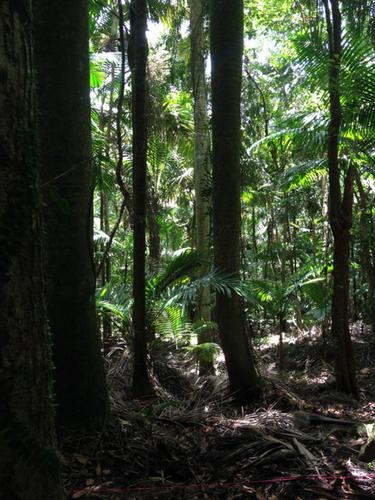Our official English website, www.x-mol.net, welcomes your
feedback! (Note: you will need to create a separate account there.)
Improving predictions of tropical tree survival and growth by incorporating measurements of whole leaf allocation
Journal of Ecology ( IF 5.3 ) Pub Date : 2020-11-20 , DOI: 10.1111/1365-2745.13560 Vanessa E. Rubio 1 , Jenny Zambrano 2 , Yoshiko Iida 3 , María Natalia Umaña 4 , Nathan G. Swenson 1
中文翻译:

通过整合全叶分配的测量值来改善热带树木生存和生长的预测
更新日期:2020-11-20
Journal of Ecology ( IF 5.3 ) Pub Date : 2020-11-20 , DOI: 10.1111/1365-2745.13560 Vanessa E. Rubio 1 , Jenny Zambrano 2 , Yoshiko Iida 3 , María Natalia Umaña 4 , Nathan G. Swenson 1
Affiliation

|
- Individual‐level demographic outcomes should be predictable upon the basis of traits. However, linking traits to tree performance has proven challenging likely due to a failure to consider physiological traits (i.e. hard‐traits) and the failure to integrate organ‐level and whole plant‐level trait information.
- Here, we modelled the survival rate and relative growth rate of trees while considering crown allocation, hard‐traits and local‐scale biotic interactions, and compared these models to more traditional trait‐based models of tree performance.
- We found that an integrative trait, total tree‐level photosynthetic mass (estimated by multiplying specific leaf area and crown area) results in superior models of tree survival and growth. These models had a lower AIC than those including the effect of initial tree size or any other combination of the traits considered. Survival rates were positively related to higher values of crown area and photosynthetic mass, while relative growth rates were negatively related to the photosynthetic mass. Relative growth rates were negatively related to a neighbourhood crowding index. Furthermore, none of the hard‐traits used in this study provided an improvement in tree performance models.
- Synthesis. Overall, our results highlight that models of tree performance can be greatly improved by including crown area information to generate a better understanding of plant responses to their environment. Additionally, the role of the hard‐traits in improving models of tree performance is likely dependent upon the level of stress (e.g. drought stress), micro‐environmental conditions or short‐term climatic variations that a particular forest experiences.
中文翻译:

通过整合全叶分配的测量值来改善热带树木生存和生长的预测
- 个人水平的人口统计结果应根据特征是可预测的。然而,将性状与树的表现联系起来已被证明具有挑战性,这可能是由于未能考虑生理性状(即硬性状)以及无法整合器官水平和整个植物水平的性状信息。
- 在这里,我们在考虑树冠分配,硬性状和当地尺度生物相互作用的同时,对树木的成活率和相对生长速度进行了建模,并将这些模型与更传统的基于性状的树木表现模型进行了比较。
- 我们发现,综合性状,总树级光合作用质量(通过将比叶面积和树冠面积相乘来估算)可得出树木存活和生长的优良模型。这些模型的AIC低于那些包含初始树大小或所考虑特征的任何其他组合的影响的AIC。成活率与冠面积和光合质量的较高呈正相关,而相对生长速率与光合质量呈负相关。相对增长率与邻里拥挤指数负相关。此外,本研究中使用的所有硬性状均未提供树性能模型的改进。
- 综合。总体而言,我们的结果表明,通过包含树冠面积信息,可以更好地改善树木性能的模型,从而更好地理解植物对其环境的反应。另外,硬性状在改善树木性能模型中的作用可能取决于特定森林所经历的压力水平(例如干旱压力),微环境条件或短期气候变化。











































 京公网安备 11010802027423号
京公网安备 11010802027423号